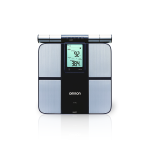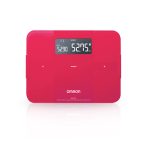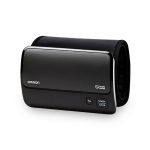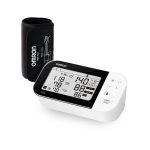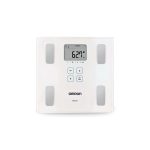How to Choose the Right Blood Pressure Monitor for Your Needs
March 28, 2023 2023-10-20 16:08How to Choose the Right Blood Pressure Monitor for Your Needs
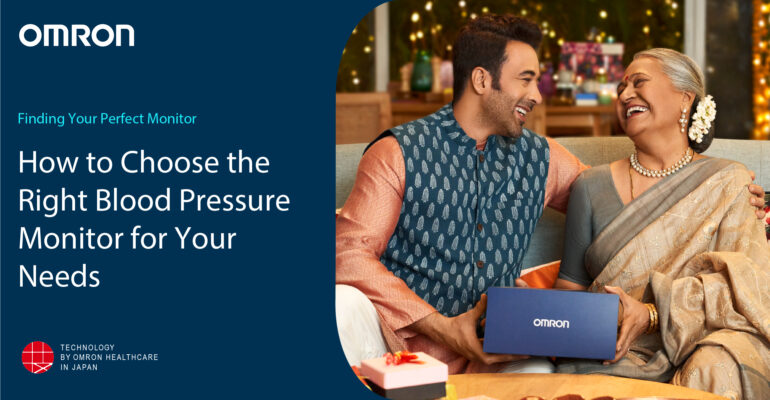
How to Choose the Right Blood Pressure Monitor for Your Needs
Hypertension is a major public health concern since it can lead to the development of serious health disorders such as heart, brain, and kidney damage. Furthermore, it is a primary cause of premature death worldwide, affecting around one in every four men and one in every five women, totaling over a billion people. The impact of hypertension is felt more severely in low- and middle-income countries.[1]
Regular monitoring of blood pressure is an important part of managing hypertension and reducing the risk of complications such as heart disease and stroke. Choosing the proper blood pressure monitor can be difficult, but by taking a few essential things into account, users can choose a monitor that meets their needs and lifestyle.
A blood pressure monitor is a device used to measure a person’s blood pressure. Blood pressure is the force of blood against the walls of the arteries as it flows through the body. A blood pressure monitor typically consists of a cuff that is placed around the upper arm or wrist and a digital display that shows the reading. The cuff is inflated to temporarily stop blood flow in the artery, and then slowly released while a sensor detects the flow of blood. The monitor then displays the two numbers that makeup blood pressure: the systolic pressure (the pressure in the arteries when the heart beats) and the diastolic pressure (the pressure in the arteries when the heart is at rest between beats). Blood pressure monitors can be used at home, in a doctor’s office, or in other healthcare settings to monitor blood pressure and track changes over time.[2]
Why is Monitoring blood pressure important?
- A blood pressure monitor can assist in detecting high blood pressure, which often goes undetected.
- Regular blood pressure monitoring can assist individuals in determining if they have high blood pressure and taking efforts to manage it.
- A blood pressure monitor allows individuals to monitor their blood pressure at home, which can be more convenient than visiting a doctor’s clinic.
- A blood pressure monitor helps individuals with hypertension to better manage their condition by tracking their blood pressure over time and adjusting their lifestyle or medication as needed.
- Individuals with normal blood pressure can use a blood pressure monitor to ensure that their blood pressure stays within a healthy range and take steps to prevent hypertension.
- Monitoring blood pressure is important for maintaining good health and preventing serious health complications such as heart disease and stroke.
- A blood pressure monitor is a useful tool for healthcare professionals to monitor and diagnose high blood pressure.
- Blood pressure monitors can help individuals make informed decisions about their health by providing accurate and reliable readings.
- Regular use of blood pressure monitors can motivate individuals to adopt a healthy lifestyle, such as exercise and healthy diet.
- A blood pressure monitor is a cost-effective way to monitor blood pressure, as it eliminates the need for frequent visits to a doctor’s clinic. [3]
How to Choose the Right Blood Pressure Monitor for Your Needs?
- Type of Monitor: There are two types of blood pressure monitors: upper arm and wrist. Upper arm monitors tend to be more accurate, but wrist monitors can be more convenient for some individuals. Upper arm monitors typically have a cuff that is placed around the upper arm, while wrist monitors have a cuff that is placed around the wrist. Wrist monitors can be more portable and easier to use, but they may not be as accurate as upper arm monitors.
- Size and Fit: It is important to choose a monitor that fits properly and is comfortable to use. To ensure that the cuff fits properly, measure your arm or wrist. Most monitors come with adjustable cuffs, but it is important to choose a monitor with a cuff size that is appropriate for your arm or wrist.
- Display and Features: Look for a monitor with a clear display that is easy to read. Monitors with large, backlit displays are typically easier to use. Consider features such as memory storage, multiple user profiles, and the ability to connect to a smartphone app. Some monitors also have features like irregular heartbeat detection that can alert you to potential heart problems.
- Accuracy: Choose an accuracy-validated monitor from a credible organization, such as the Association for the Advancement of Medical Instrumentation or the British Hypertension Society. For reliable readings, it is also critical to use the monitor correctly and to follow the manufacturer’s recommendations.
- Cost: Blood pressure monitors can range in price from under $20 to several hundred dollars. Consider your budget and whether the features of a more expensive monitor are necessary for your requirements. While more expensive monitors may have more capabilities/features, a basic monitor can be just as useful for many people. [4]
Omron blood pressure monitors are designed to be easy to use and provide accurate readings. They come in different models with various features, such as memory storage, multiple user profiles, and Bluetooth connectivity to sync data with a mobile app.
Wrap-Up
By choosing the right blood pressure monitor and following the manufacturer’s instructions, individuals can accurately monitor their blood pressure and make informed decisions about their health.
Reference:
- https://www.who.int/health-topics/hypertension#tab=tab_1
- https://www.ncbi.nlm.nih.gov/books/NBK279251/
- https://www.heart.org/en/health-topics/high-blood-pressure/understanding-blood-pressure-readings/monitoring-your-blood-pressure-at-home
- https://health.clevelandclinic.org/buying-a-home-blood-pressure-monitor-6-things-you-need-to-know/

